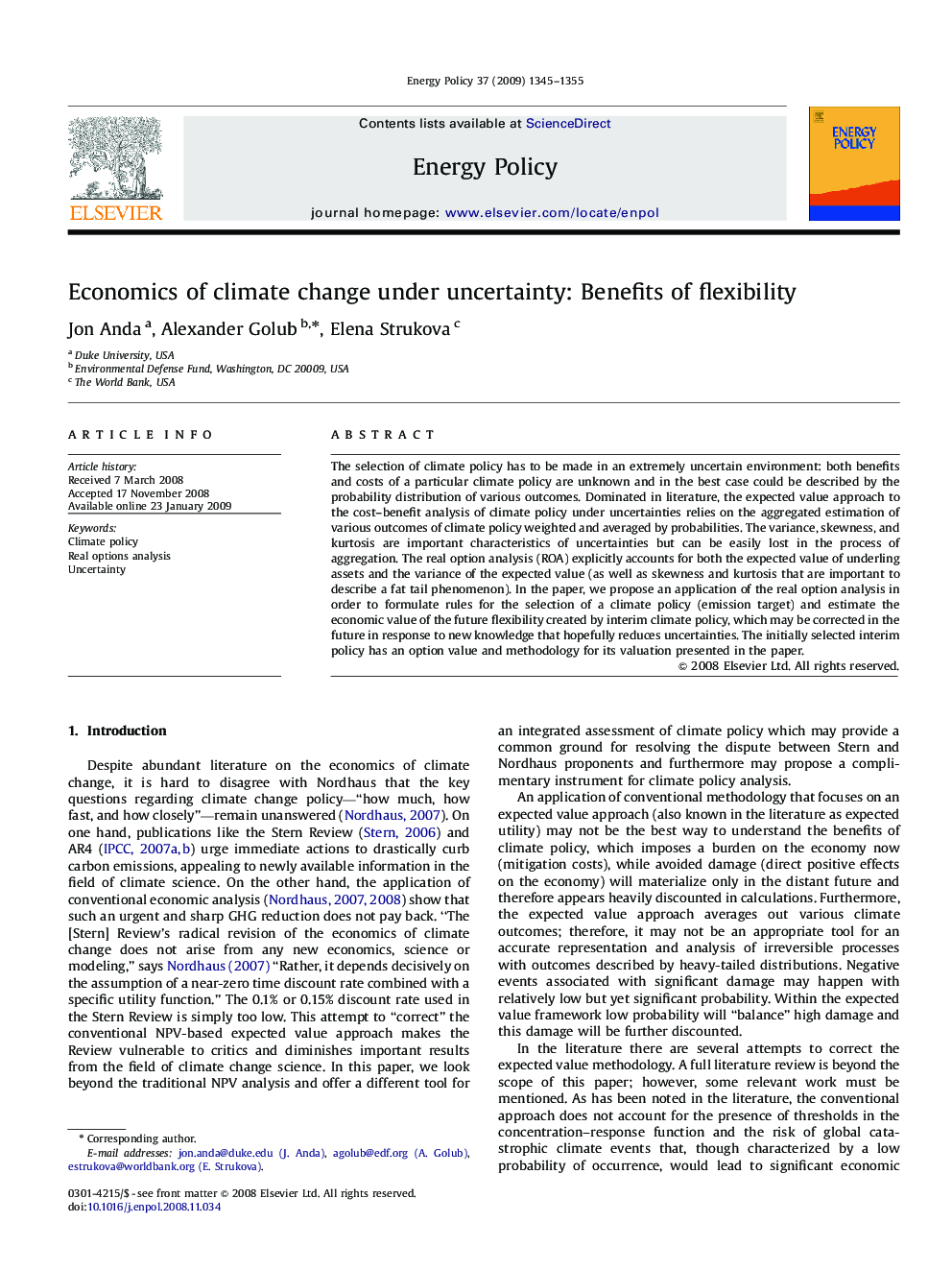| Article ID | Journal | Published Year | Pages | File Type |
|---|---|---|---|---|
| 996974 | Energy Policy | 2009 | 11 Pages |
The selection of climate policy has to be made in an extremely uncertain environment: both benefits and costs of a particular climate policy are unknown and in the best case could be described by the probability distribution of various outcomes. Dominated in literature, the expected value approach to the cost–benefit analysis of climate policy under uncertainties relies on the aggregated estimation of various outcomes of climate policy weighted and averaged by probabilities. The variance, skewness, and kurtosis are important characteristics of uncertainties but can be easily lost in the process of aggregation. The real option analysis (ROA) explicitly accounts for both the expected value of underling assets and the variance of the expected value (as well as skewness and kurtosis that are important to describe a fat tail phenomenon). In the paper, we propose an application of the real option analysis in order to formulate rules for the selection of a climate policy (emission target) and estimate the economic value of the future flexibility created by interim climate policy, which may be corrected in the future in response to new knowledge that hopefully reduces uncertainties. The initially selected interim policy has an option value and methodology for its valuation presented in the paper.
